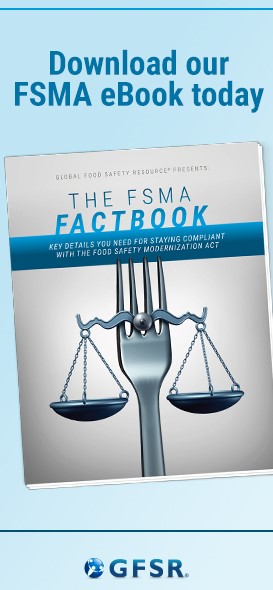The FDA Modernizes with its New Era of Smarter Food Safety
The FDA’s latest roll out is its much-lauded New Era of Smarter Food Safety and it comes at a crucial time for both the food industry and food safety. The document’s approach is prescient, given that it was prepared and written pre-pandemic. Designed to tackle issues from traceability to contamination, this New Era’s major theme is employing the latest tech to manage long-standing industry problems.
Consisting of four core elements, this new blueprint is meant to guide the agency over the next ten years, with what the FDA describes as “a new approach, a mindset, one that leverages modern technologies, tools and approaches to keep pace with our changing world. The New Era of Smarter Food Safety builds on the work that FDA has done to implement the FDA Food Safety Modernization Act (FSMA) in which Congress envisioned a network of protections based on science and risk to public health.”. With over 1,500 stakeholders having engaged in this process, the new guidelines also include what the FDA lists as “achievable goals” including in traceability, prevention and outbreak response, retail modernization and new business models and food safety culture.

Considering Each Goal
Enhancing traceability is an especially important issue due to the pandemic, as the rise in food fraud cases have been increasing, as we have already reported in this publication. The agency is recommending the use of digital technologies such as blockchain and analytic tools to accelerate the detection of contaminated foods and prevent supply chain imbalances.
Dr. Darin Detwiler is Northeastern University Professor of food policy and the author of Building the Future of Food Safety Technology: Blockchain and Beyond, as well as Food Safety: Past, Present, and Predictions. Detwiler points out that, prior to the pandemic, the repeated outbreaks tied to Romaine lettuce resulted in the FDA pointing to the produce’s lack of digitalized traceability as a main obstacle in their response.
Data gathering and other “smart tools” is the second core component and the means by which the agency will strive to prevent and handle future outbreaks. By gathering, analyzing and ensuring the quality of this data, the FDA aims to ultimately improve the safety of our food products.
With accumulating innovations in both novel products and retail, the third component of the new blueprint includes ways in which oversight will continue to adapt. Examples include online grocery and restaurant deliveries and novel products such as cell cultured meats. The blueprint highlights engaging with restaurants as they restart and ensure that new practices are safely put into place.
Of course, food safety culture is an integral aspect. Dr. Detwiler notes how the CDC still estimates that each year roughly 1 in 6 Americans (or 48 million people) get sick, 128,000 are hospitalized, and 3,000 die of foodborne diseases. Now, this culture has taken on a new dimension as the meat processors and farm workers have been deemed essential and their work environments likely vectors for COVID-19. Commenting on this, the FDA noted that “the pandemic shined a light on what it also means to have a food safety culture. It’s about influencing the people who work on farms and in facilities and also about keeping those people safe when co-workers are sick. It’s about educating consumers on the best food safety practices when cooking at home, which more people are doing now. Taking responsibility and protecting each other is not just the foundation of a food safety culture; it mirrors one of the primary lessons from COVID-19, that we – government, industry and consumers – must all work together to help keep each other safe.” Indeed, a strong food safety culture cannot be intact if workers are fearful of their lives when they step into their workplace.
With much still at stake in the food industry as the pandemic wears on, we look forward to seeing the FDA implement this new plan and potentially mitigate some of the worst of the pandemic with it. As Stephen Hahn, the Commissioner of the FDA noted, “In the months that have followed, it has become even clearer — from our experiences with the pandemic and the lessons we have been learning as part of the FDA’s response to it — just how essential the actions outlined in this blueprint are and, if anything, that they are more important now, than ever.”

Categories: Food Safety Standards
Tags: Food Safety , smarter food safety



